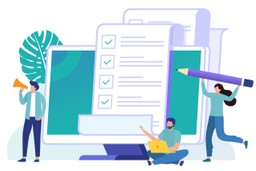As any business grows, it becomes increasingly important to have a well-defined onboarding process for new employees. A successful onboarding program is not about getting newcomers up to speed as quickly as possible or ensuring that they have all the information they need to do their jobs effectively. While those things are important, they are not the ultimate goal of an onboarding program. The real purpose of an onboarding program is to help new employees feel like they are part of the team from day one. It’s about helping them understand the culture of the organization and what it means to be a member of that team. It’s about helping them feel welcomed, valued, and supported in their new roles. The onboarding process is not only the responsibility of the HR department. It’s a team effort, and everyone in the organization plays a role in making it successful. Therefore, it entails that the organizations have the best practices for onboarding new employees in order to ease the transition and avoid any issues that may potentially disrupt the experience of the hires.
The onboarding procedure can be simple or complex and should be designed to fit your organization’s needs. So, you definitely need a checklist to make sure that you’re covering all your bases. The full onboarding program is often broken down into three main stages:
Pre-onboarding Checklist
This is the starting point of the whole onboarding process. Let’s go through the pre-onboarding checklist:
- Confirm the Arrival of the New Employees: This step seems to be unnecessary, but it actually plays an important role. You should always contact the new employees a few days before their first day of work to reconfirm the date, time, and location. This will certainly help you prevent any confusion on their first day.
- Plan the First Day: The first day is critical for setting the tone for the rest of the onboarding process. You should take some time to plan out the day so that it runs smoothly. Prepare the Workspace: You should make sure that the workspace is ready for the new employees before they arrive. This includes setting up their desks, computer, and any other equipment they will need.
- Prepare Necessary Paperwork: There are a few essential pieces of paperwork that you will need to hand in before the new employees arrive. These include things like employment contracts, tax forms, and direct deposit information.
- Conduct Personality Testing: This is an optional thing to do, but if you are able to, then why not? A personality test enables you to look deeper into the character traits, interests, strengths, aptitudes, and more of an individual. Accordingly, the information you gain from the results will prove useful for planning the onboarding process in some aspects, such as team building, training, and finding the right mentor. And one useful profiling tool that facilitates easy personality testing you can consider is bravoGROWTH – a personal reflection tool based on RIASEC and MBTI tests.
Day-one Onboarding Checklist
This is when the real onboarding process begins. Here’s what you need to include in your onboarding checklist for day one:
- Send Welcome Emails: A heart-warming welcome should be sent to the newcomers on their first day at your company. This should be done previously so that the new employees can open it soon after they sit down and touch their PCs.
- Walk an Office Tour: On the very first day at work, you should assign a representative from the HR department to take the new employees around the office for three purposes: Firstly, the rookies can familiarize themselves with the new working space. Secondly, this is an opportunity for you to introduce the newbies to other staff and also a chance for them to get to know each other. It is a simple thing but can create a good first impression and later work harmony within your team and your organization, so do not miss this part.
- Conduct Orientation Training: The orientation training will be the longest session on the first day before handing the newbies to their line managers and teams. It should cover all of the essential information that the new employees need to know, such as the company’s history, mission, and values, or in short, the company overview. You should also include information about the company’s policies, procedures, and employee benefits when working here.
- Training Sessions: The new employees will need to undergo some form of role-specific training so that they can be up to speed with the company’s work processes. This could be anything from a few hours of e-learning to several weeks of on-job training.
Post-onboarding Checklist
Do not think that your onboarding mission is over yet. There are still a few things that need to be done in order to ensure a smooth transition into the company.
- Follow Up with New Employees: After the first day, you should check in with the newcomers to be aware of how they are settling in and blending into the team, as well as if they have any questions or concerns. This can be done via different methods, such as email, phone, or in person.
- Conduct Surveys: A few weeks after the new employees have started, you should conduct some kind of onboarding surveys to get their feedback on the onboarding process. This will help you identify any areas that need improvement. With bravoSURVEYS, you can craft and customize a comprehensive survey easily within minutes, easing the burden on your HR team.
- Review the Whole Process & from the Mistakes: No successful process stays its way forever, and the same for onboarding. You will need to constantly work on it and upgrade it over time. After the survey has been completed, you should review the entire onboarding process to see what went well and what could be improved. This is also a good chance to get feedback from the managers of the new employees. With the valuable information at hand, you can make any necessary changes to the onboarding process for future intakes.
Final Thoughts
We believe that we need no further emphasis on the role of having a proper onboarding procedure within your organization. And a new hire onboarding checklist will play a supporting role in ensuring that you plan the process properly as well as apply it smoothly. Make sure you get a plan and a checklist to follow. If you are stuck at the stage of brainstorming your onboarding program, then a few creative ideas will blow your mind and prove useful.








